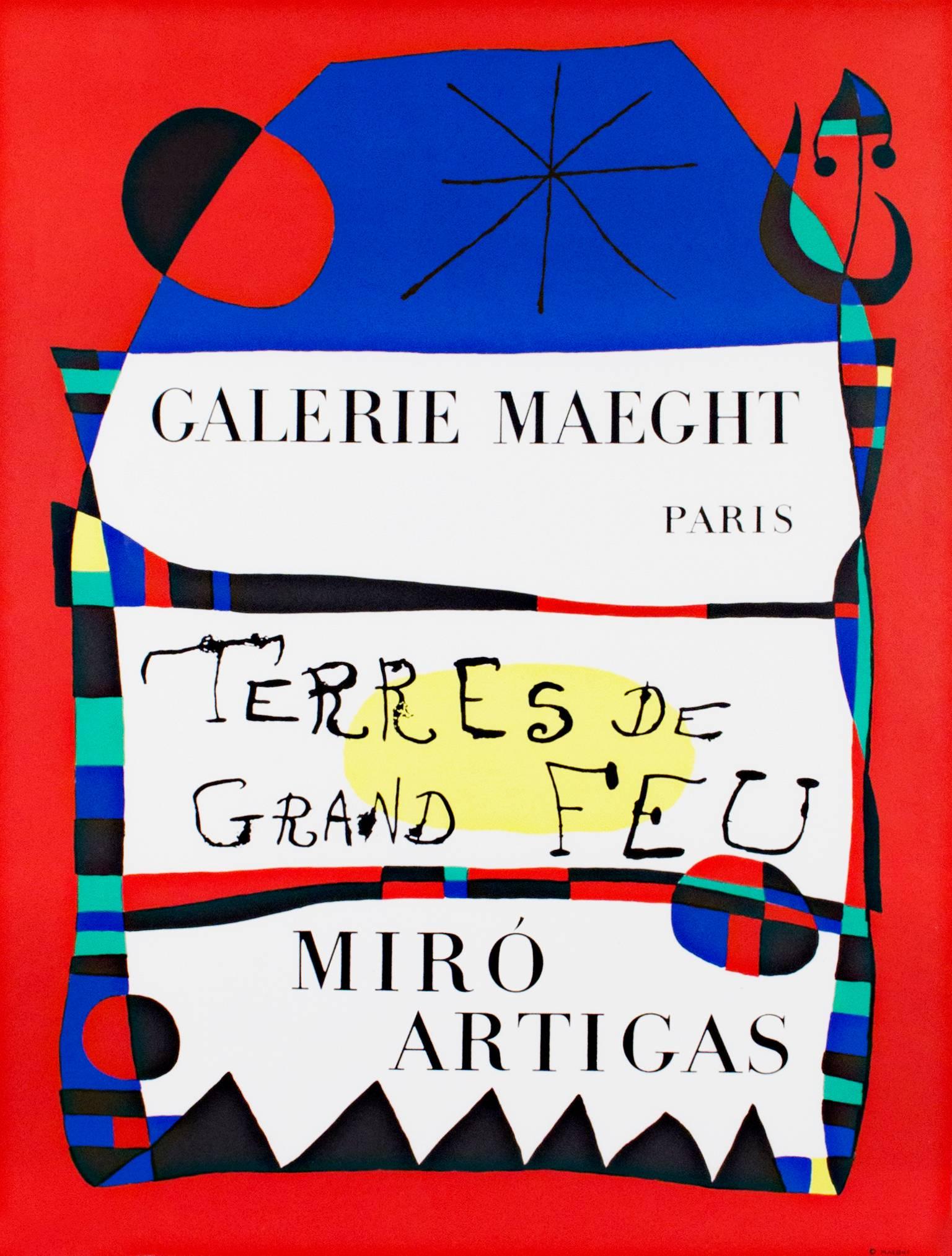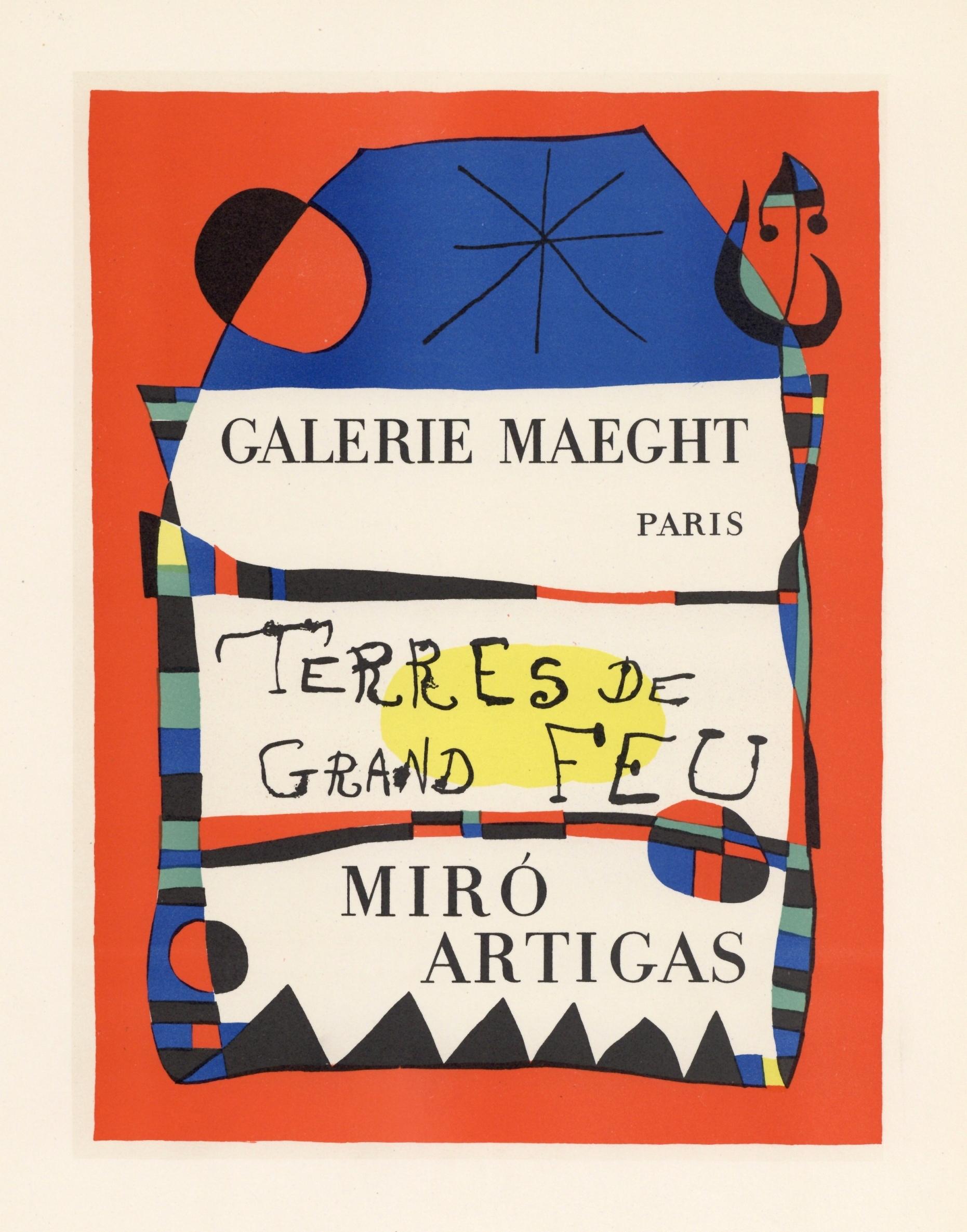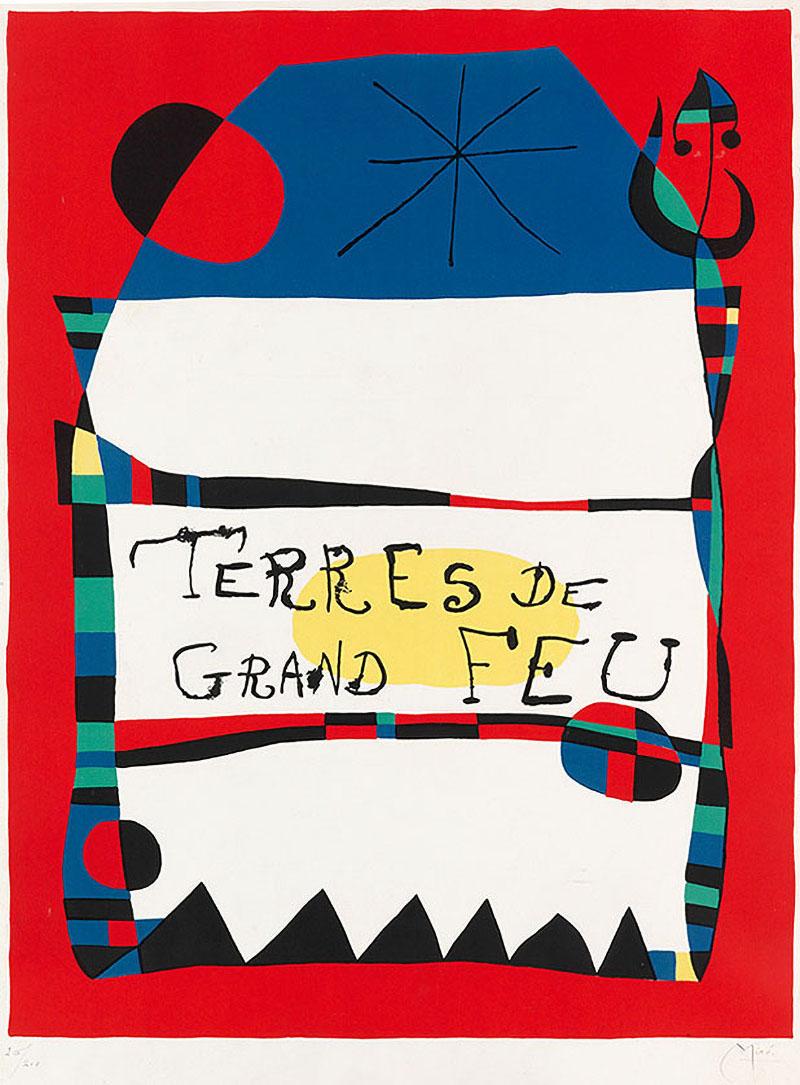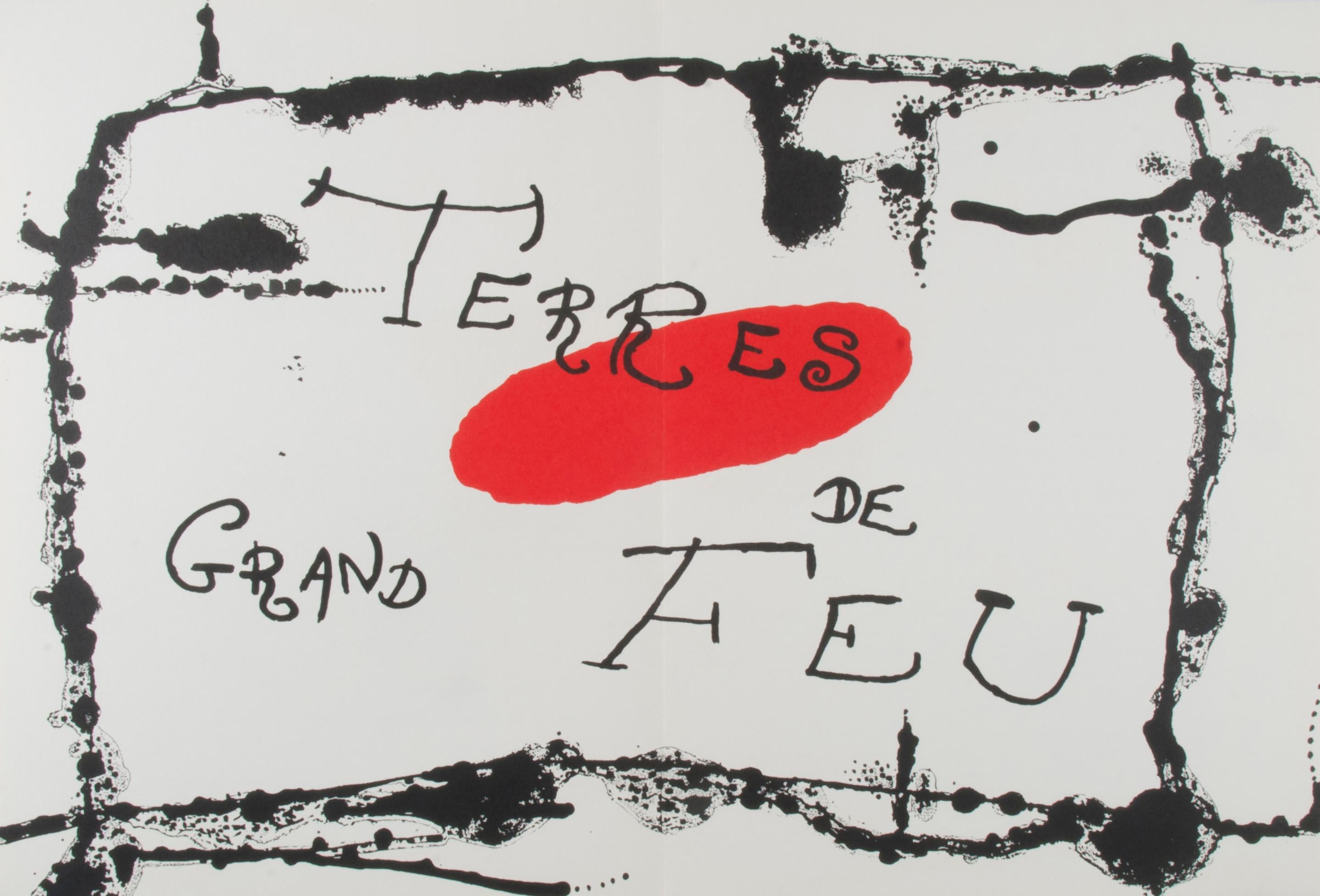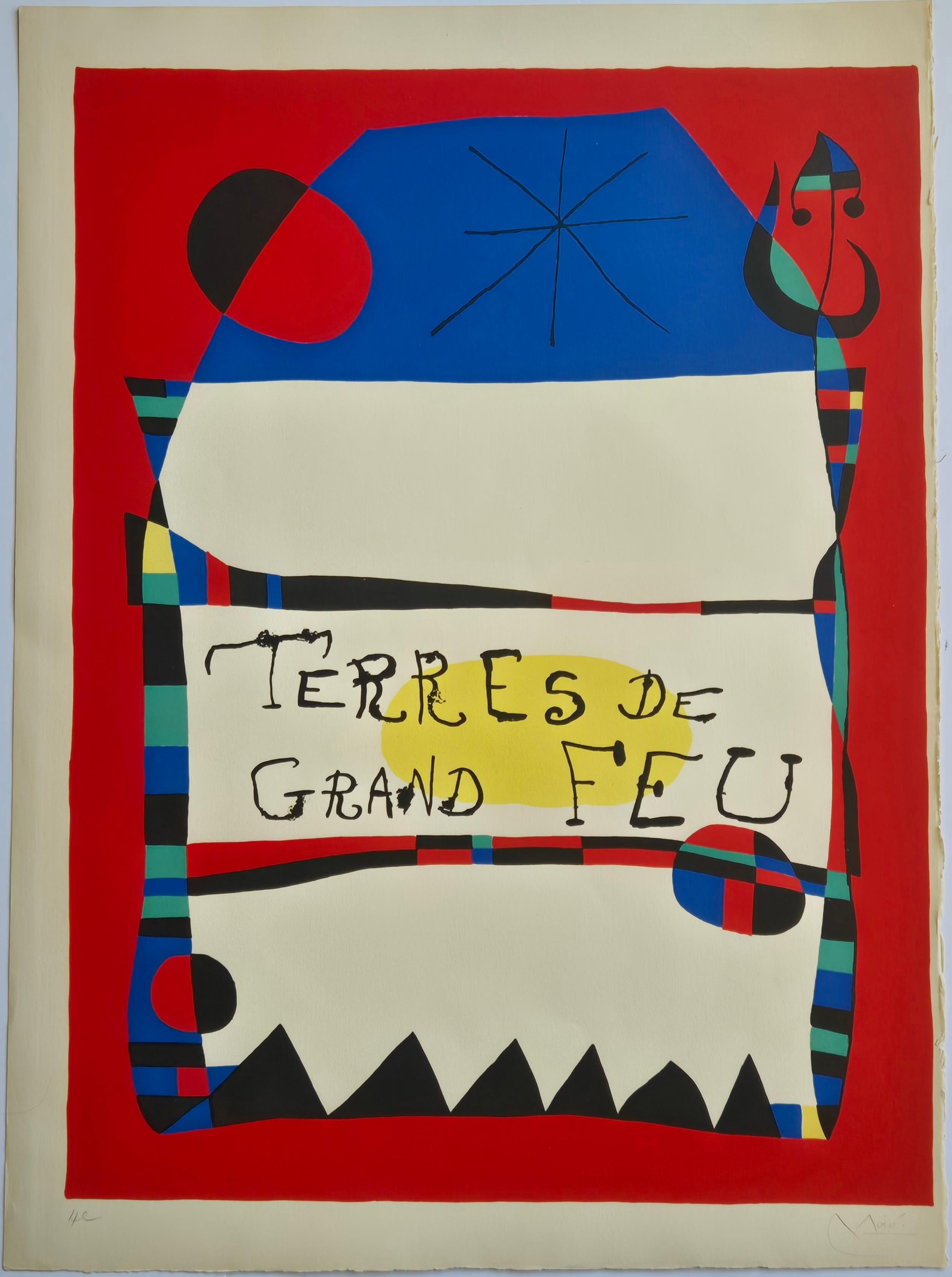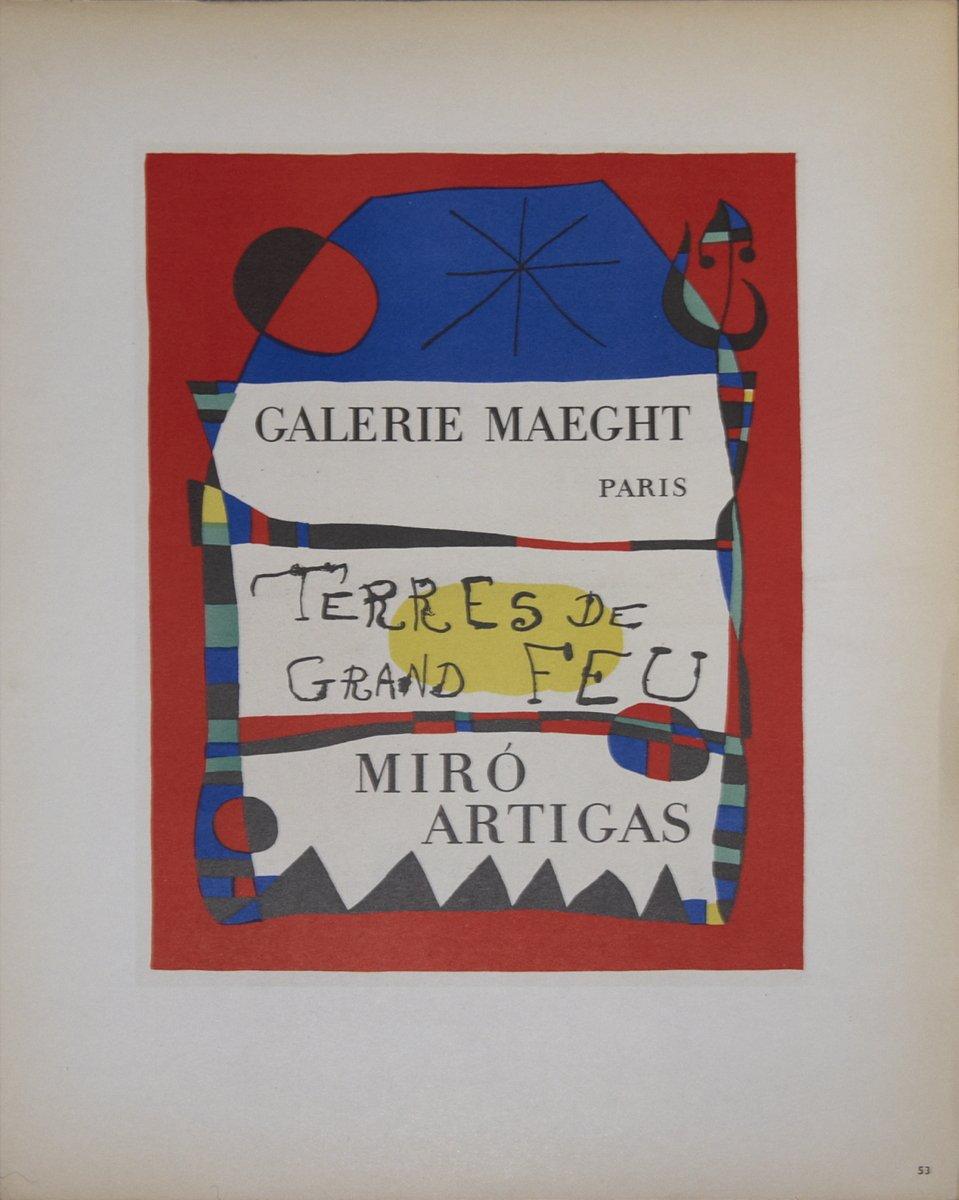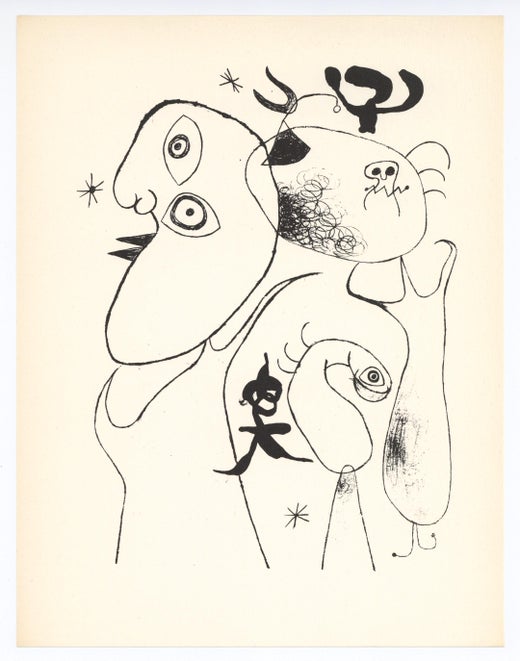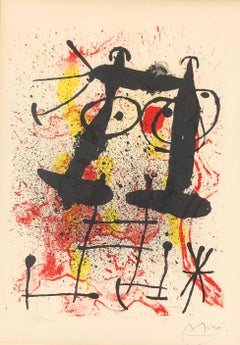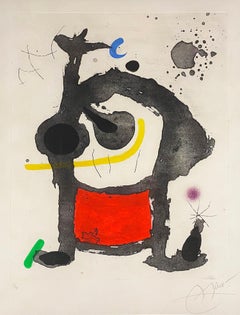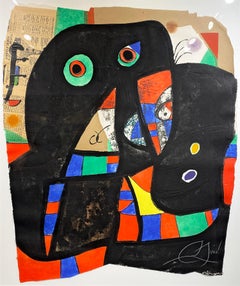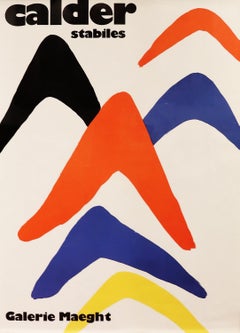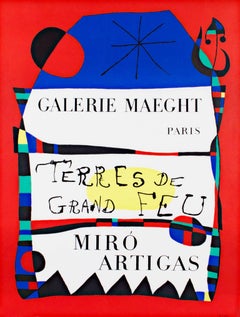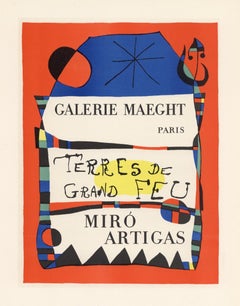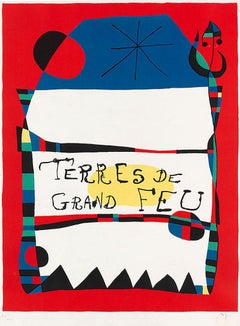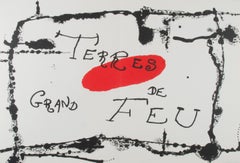Items Similar to Teres de Grand Feu
Video Loading
Want more images or videos?
Request additional images or videos from the seller
1 of 10
(after) Joan MiróTeres de Grand Feu
Price Upon Request
Price Upon Request
Price Upon Request
Price Upon Request
Price Upon Request
Price Upon Request
Price Upon Request
Price Upon Request
Price Upon Request
Price Upon Request
About the Item
Terres de Grand Feu
Miro Artigas
Galerie Maeght Fine Art Poster Print
30 x 21 inches
31 x 22 inches with frame
Joan Miro (Spanish, 1893-1983)
Joan Miro was born in Barcelona, Spain on April 20, 1893, the son of a watchmaker. From 1912 he studied at the Barcelona Ecole des Beaux-Arts and the Academie Gali. In the first quarter of the 20th century, Barcelona was a cosmopolitan, intellectual city with a craving for the new in art, music and literature. But it was not the place where great art was being made. That place was Paris and Miro established himself there at the age of twenty-six. He made friends with Pablo Picasso, Alexander Calder, Ernest Hemingway, Max Ernst and Paul Klee and was accepted as a Surrealist, looking stronger as the years went by. He lived alone in Paris in total poverty, but everytime he went out he wore a monocle and white spats. He kept his brushes clean, waxed and polished the floor of his studio and arranged his canvases in neat order.
Miro went about his career with orderly determination. He wrote to Picasso in 1929 that he was looking for a studio, a dealer and a wife. That same year he married the daughter of family friends. Her name was Pilar Juncosa and they were happily married in 1929 and were together for fifty-four years. They had one daughter, Dolores.
Miro was certainly the most distinguished painter of Catalonia; he was intensely proud of that fact. All of his work was conceived in Montroig (the site of his family's farm). Most important of these was the painting named The Farm which did not sell in Paris and was sold finally to Ernest Hemingway for $250.
He was the most enduring of the Surrealist artists; he first visited the United States in 1947 in order to execute a mural Commission in Cincinnati, Ohio. His reputation had preceded him and he had already had enormous influence on such American artists as Adolph Gottlieb and Mark Rothko, who had adopted his Surrealist automatism and mysterious primitive symbols for their own purposes.
Miro had tried his hand at ceramics, bronze sculpture, printmaking, book illustration, posters, costume design, etc. He was seventy-nine years old when he began his series of monumental bronzes. When he was eighty, he joined forces with a young Spaniard named Josep Royo who was a weaver of tapestries. Miro would spread Royo's tapestries on the floor and proceed to design changes, adding all kinds of materials, painting some areas, even burning areas. The result was a series called Sobreteixims. Miro has transformed the Royo tapestries from admirable folk art into perhaps masterpieces.
He died on Christmas Day in 1983 in Palma Majorca where he had lived and worked for several years.
- Creator:(after) Joan Miró (1893 - 1983, Spanish)
- Dimensions:Height: 30 in (76.2 cm)Width: 21 in (53.34 cm)
- Movement & Style:
- Period:
- Condition:
- Gallery Location:Missouri, MO
- Reference Number:1stDibs: LU747314094002
(after) Joan Miró
Joan Miró i Ferrà was a Spanish painter, sculptor, and ceramicist born in Barcelona. A museum dedicated to his work, the Fundació Joan Miró, was established in his native city of Barcelona in 1975, and another, the Fundació Pilar i Joan Miró, was established in his adoptive city of Palma de Mallorca in 1981.
About the Seller
5.0
Vetted Professional Seller
Every seller passes strict standards for authenticity and reliability
Established in 1970
1stDibs seller since 2017
156 sales on 1stDibs
Typical response time: Several days
- ShippingRetrieving quote...Shipping from: Missouri, MO
- Return Policy
More From This Seller
View AllHai-Ku Series
By Joan Miró
Located in Missouri, MO
Color Lithograph
Ed. 15/100
Signed and Numbered
Category
1960s Abstract Abstract Prints
Materials
Lithograph
Price Upon Request
Bethsabee
By Joan Miró
Located in Missouri, MO
Joan Miro
“Bethsabee” 1972
Etching and Aquatint in Colors on Wove Paper
Hand-Signed by the Artist in Pencil Lower Right
Numbered in Pencil “5/50” Lower Left
Maeght editeur Pairs
Printing: Morsang, Paris
Sheet Size: 36 x 24 3/4 inches
Framed Size: approx 41 x 39 inches
Catalogue Raisonne: Miro Engravings Vol. 2 (1961-1973), Pg. 197, #556
Joan Miro was born in Barcelona, Spain on April 20, 1893, the son of a watchmaker. From 1912 he studied at the Barcelona Ecole des Beaux-Arts and the Academie Gali. In the first quarter of the 20th century, Barcelona was a cosmopolitan, intellectual city with a craving for the new in art...
Category
1970s Modern Abstract Prints
Materials
Etching, Aquatint
Price Upon Request
Gaudi XX, (D. 1079)
By Joan Miró
Located in Missouri, MO
Gaudi XX, (D. 1079), 1979
By. Joan Miro
Signed Lower Right
Edition 41/50 Lower Left
Unframed: 37.5" x 30.75"
Framed: 46.5" x 39"
Joan Miro was born in Barcelona, Spain on April 20, 1893, the son of a watchmaker. From 1912 he studied at the Barcelona Ecole des Beaux-Arts and the Academie Gali. In the first quarter of the 20th century, Barcelona was a cosmopolitan, intellectual city with a craving for the new in...
Category
20th Century Abstract Abstract Prints
Materials
Paper, Etching, Aquatint
Price Upon Request
Calder Stabiles
By (after) Alexander Calder
Located in Missouri, MO
Calder Stabiles
Galerie Maeght Fine Art Poster Print
30 x 22 inches
31 x 23 inches with frame
Alexander Calder (American, 1898-1976)
One of America's ...
Category
20th Century Surrealist Abstract Prints
Materials
Color
Price Upon Request
The Triangles and Spiral
By Alexander Calder
Located in Missouri, MO
The Triangles and Spiral, 1973
By. Alexander Calder (American, 1898-1976)
Signed Lower Right
Numbered: 66/150
Unframed: 26 x 19.25 inches
Framed: 34 x 27 inches
Alexander Calder was born in Philadelphia in 1898. After obtaining his mechanical engineering degree from the Stevens Institute of Technology, Calder worked at various jobs before enrolling at the Art Students League in
New York City in 1923. During his student years, he did line drawing for the National Police Gazette.
In 1925, Calder published his first book, Animal Sketches...
Category
1970s Abstract Abstract Prints
Materials
Color, Lithograph
Price Upon Request
Soleil Recercle
By Hans (Jean) Arp
Located in Missouri, MO
Soleil Recercle
Color woodcut, 1966, on wove,
Signed and Numbered ed. 50
Cat. Rais. Arntz
Sheet Size: approx. 22 x 17.5 inches
Framed Size: approx. 24 x 20 inches
Jean Arp was a p...
Category
1960s Modern Abstract Prints
Materials
Woodcut
You May Also Like
"Terres de Grande Feu, Miró-Artigas, " an Original Color Poster by Joan Miró
By Joan Miró
Located in Milwaukee, WI
"Terres de Grande Feu" is an original color lithograph poster by Joan Miró for Galerie Maeght Paris. Poster produced for the exhibition of 43 ceramic pieces,...
Category
1950s Surrealist Abstract Prints
Materials
Lithograph
"Terres de Grand Feu" lithograph poster
By (after) Joan Miró
Located in Henderson, NV
Medium: lithograph (after the original lithograph poster). During the late 1940's and throughout the 1950's, Miro created a series of posters at the atelier of Mourlot Freres. The li...
Category
1950s Prints and Multiples
Materials
Lithograph
Terres de grand feu, 1956
By Joan Miró
Located in Palo Alto, CA
Joan Miró Terres de grand feu, 1956 was created to celebrate a three-month exhibition at the Galerie Maeght, Paris, of ceramics done by Miró a...
Category
1950s Modern Abstract Prints
Materials
Lithograph
$8,000 Sale Price
42% Off
Terres de Grand Feu, (Land of Great Fire)
By Joan Miró
Located in Fairlawn, OH
Derriere le miroir, no. 87-88-89. Pages 6-7
Terres de Grand Feu, (Land of Great Fire)
Color lithograph, 1956
From: Derriere le Miroir, Volume 87-88-89, 1956
Unsigned as issued by DL...
Category
1950s Abstract Abstract Prints
Materials
Lithograph
Joan Miró -- Terres de grand feu
By Joan Miró
Located in BRUCE, ACT
Joan Miró
Terres de grand feu, 1956
Lithograph
Image size 76 x 55 cm
Sheet size 68 x 51 cm
Hand signed lower right
Edition EA lower left
Published by Maeght Éditeur, Paris.
Literatur...
Category
1950s Prints and Multiples
Materials
Lithograph
1959 After Joan Miro 'Terres de Grand Feu'
By Joan Miró
Located in Brooklyn, NY
Paper Size: 12.5 x 9.25 inches ( 31.75 x 23.495 cm )
Image Size: 8.5 x 6.5 inches ( 21.59 x 16.51 cm )
Framed: No
Condition: A-: Near Mint, very light signs of handling
Additio...
Category
1950s Abstract Prints and Multiples
Materials
Lithograph
$80 Sale Price
20% Off
More Ways To Browse
Grand Feu
Miro Tapestry
Miro Sobreteixims
Felipe Pantone
Frank Stella Poster
George Braque Signed Print
Henri Epstein
Henri Gaudier Brzeska
Irwin Hollander
Jean Michel Basquiat Signed
Jim Dine Signed 8 Hearts
Joan Miro Carborundum
John Chamberlain On Sale
Marcel Mouly Signed Print
Michael Abramson
Misch Kohn
Peter Max Images Of An Era
Pierre Soulages Poster
